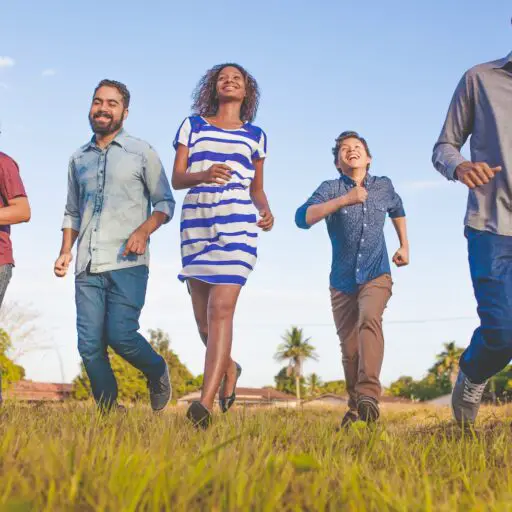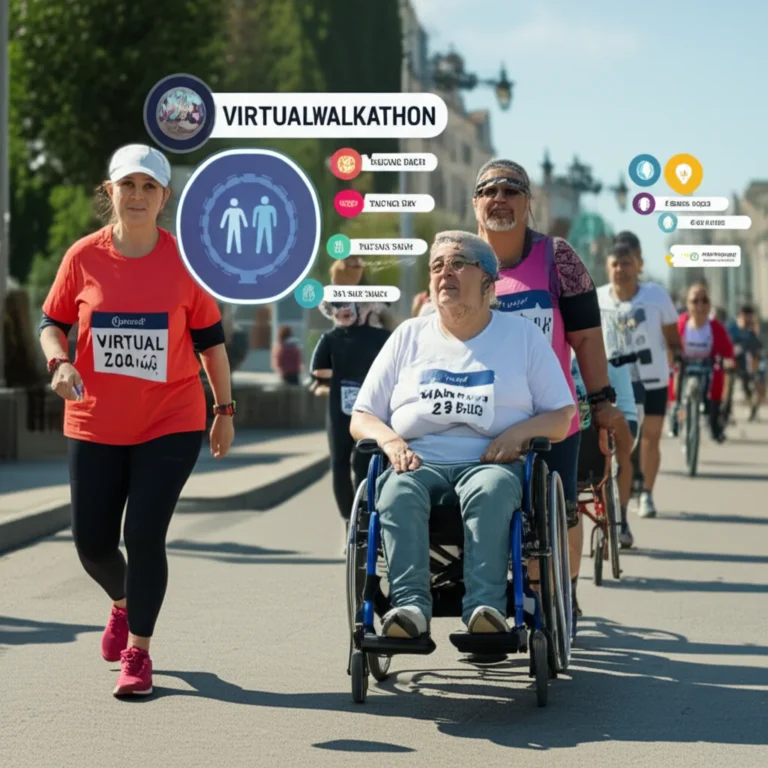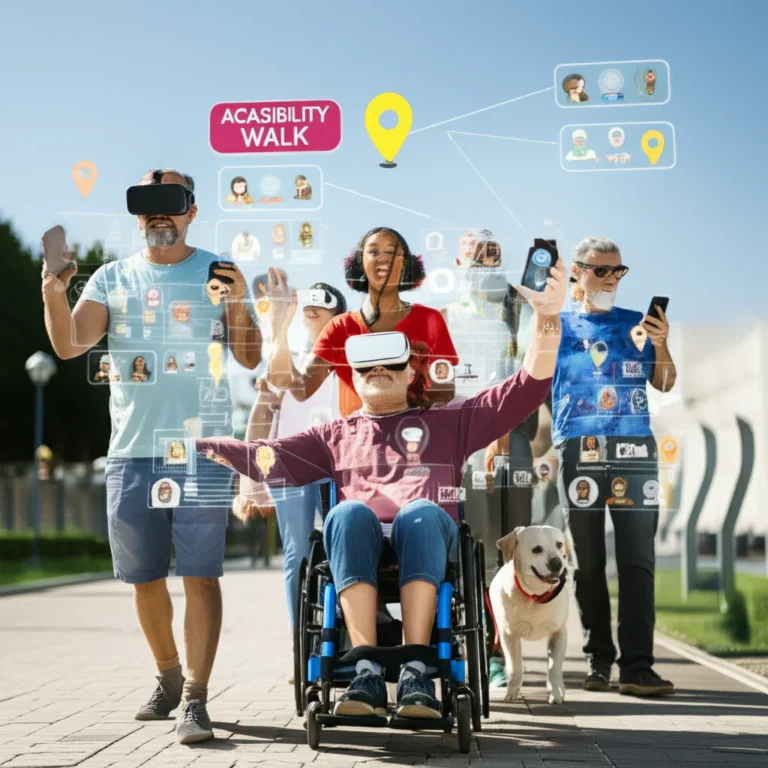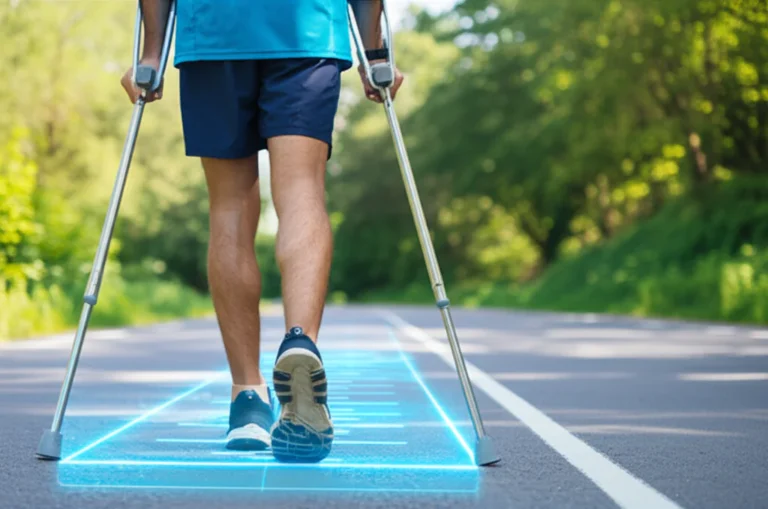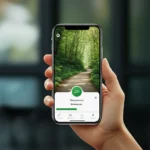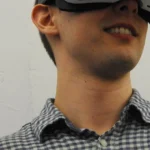Support our educational content for free when you purchase through links on our site. Learn more
7 Virtual Walks for Wheelchair Users to Explore in 2025 🚶🦽
Imagine strolling through the cherry blossoms of Tokyo or wandering the cobblestone streets of Paris—all without leaving your wheelchair or living room. Virtual walks for wheelchair users are revolutionizing how mobility challenges meet adventure, connection, and wellness. At Walkathon Virtual™, we’ve seen firsthand how immersive VR experiences and interactive apps open doors to the world, breaking physical barriers and sparking joy.
In this comprehensive guide, we’ll unveil the top 7 virtual walking experiences and tools tailored for wheelchair users in 2025. From cutting-edge VR headsets like the Meta Quest 2 to social platforms where you can join group strolls, we cover everything you need to know to start your virtual journey. Plus, discover expert tips on comfort, accessibility, and community-building that will keep you rolling forward with confidence.
Ready to explore new horizons? Keep reading to find out which virtual walks made our list, how to choose the perfect gear, and how these digital adventures can boost your mind, body, and spirit.
Key Takeaways
- Virtual walks offer accessible, immersive adventures that wheelchair users can enjoy safely and comfortably from home.
- The Meta Quest 2 headset leads the pack with wireless freedom, seated mode, and a vast app library perfect for virtual strolls.
- Apps like Wander, AltspaceVR, and Google Earth VR provide diverse experiences—from real-world tours to social meetups.
- Virtual walks improve mental well-being, physical activity, and social connection, making them powerful tools for holistic health.
- Expert advice on ergonomics, troubleshooting, and community engagement ensures you get the most out of your virtual walks.
👉 Shop VR Headsets & Accessories:
- Meta Quest 2: Amazon | Walmart | Meta Official Website
- HP Reverb G2: Amazon | Best Buy | HP Official Website
Table of Contents
- ⚡️ Quick Tips and Facts
- 🌍 The Evolution of Accessible Exploration: A Journey Through Virtual Walks
- 🚀 Why Virtual Walks Are a Game-Changer for Wheelchair Users: Unlocking New Horizons
- 1. 🗺️ Diverse Digital Destinations: Exploring Types of Virtual Walk Experiences
- 2. 🧭 Charting Your Course: Key Considerations for Choosing Your Virtual Adventure
- 3. 👓 Top-Tier Tech: Our Favorite VR Systems for Accessible Virtual Walks
- 4. 📱 Beyond the Headset: Essential Apps and Platforms for Immersive Virtual Exploration
- 🛠️ Crafting Your Command Center: Optimizing Your Virtual Walk Setup
- 🤝 The Power of Connection: Building Community Through Virtual Walks
- 🌟 Expert Navigator’s Log: Maximizing Your Virtual Journey with Pro Tips
- 🔮 The Road Ahead: Innovations in Virtual Accessibility and Future Possibilities
- ✅ Conclusion
- 🔗 Recommended Links
- ❓ FAQ
- 📚 Reference Links
⚡️ Quick Tips and Facts
Welcome to the ultimate guide on virtual walks for wheelchair users! At Walkathon Virtual™, our team of personal trainers and health pros have seen firsthand how virtual walking experiences can transform lives. Whether you’re looking to boost your physical activity, connect socially, or explore the world from your chair, virtual walks open up amazing possibilities.
Here’s a quick snapshot to get you started:
- ✅ Virtual walks are accessible and adaptable for wheelchair users, offering seated-friendly experiences.
- ✅ VR headsets like Meta Quest 2 and HP Reverb G2 provide immersive environments without needing to leave home.
- ✅ Apps like Wander and AltspaceVR let you explore real-world locations or join social meetups.
- ✅ Virtual challenges and walkathons can motivate you to stay active at your own pace.
- ❌ You don’t need expensive gear or advanced tech skills to begin — many options are beginner-friendly.
- ✅ Virtual walks help combat isolation, improve mental health, and encourage physical movement.
- ✅ Comfort and accessibility features (like adjustable straps and seated modes) are key when choosing VR gear.
Curious about how to pick the right gear or which apps are best? Keep reading—we’ll walk you through everything, step by step. Ready to roll? 🚀
🌍 The Evolution of Accessible Exploration: A Journey Through Virtual Walks
Virtual walks for wheelchair users didn’t appear overnight. They’re the result of decades of innovation in accessibility, technology, and community-driven solutions.
From Wheelchair Ramps to Virtual Reality
Remember when wheelchair ramps were a luxury? Today, accessibility is a right, and technology is pushing it further. Virtual walks evolved from simple 360° videos to fully immersive VR experiences that let you stroll through the streets of Paris or hike the Grand Canyon—all from your living room.
Why Virtual Walks Matter
For many wheelchair users, physical barriers limit outdoor exploration. Virtual walks break those barriers by:
- Offering safe, customizable environments.
- Providing social connection without geographic limits.
- Enabling physical activity and mental stimulation.
Our team has witnessed clients regain confidence and joy through virtual walks, especially during times when going outside is difficult or impossible.
🚀 Why Virtual Walks Are a Game-Changer for Wheelchair Users: Unlocking New Horizons
Virtual walks aren’t just a cool tech trend—they’re a lifeline for many. Here’s why:
Beyond the Physical: Mental and Emotional Benefits
Isolation and limited mobility can impact mental health. Virtual walks offer:
- Stress relief and mood enhancement through immersive nature scenes.
- Cognitive engagement by navigating new environments.
- Social interaction via multiplayer VR platforms.
One of our clients, Sarah, a power wheelchair user, shared how virtual strolls through Tokyo’s cherry blossoms helped her feel connected to the world during lockdowns.
Breaking Down Barriers: The Promise of Virtual Accessibility
Virtual walks eliminate physical obstacles like uneven terrain or inaccessible paths. Plus, many VR apps are designed with wheelchair users in mind, allowing:
- Seated play modes.
- Customizable controls for limited hand function.
- Adjustable movement speeds.
This inclusivity means everyone can participate, regardless of mobility level.
1. 🗺️ Diverse Digital Destinations: Exploring Types of Virtual Walk Experiences
Virtual walks come in many flavors. Let’s explore the main types you can enjoy.
From Scenic Strolls to Global Adventures: Pre-recorded Journeys
These are 360° video tours or panoramic walks filmed in real locations. Examples include:
- Wander (available on Meta Quest): Explore cities, landmarks, and nature trails using Google Earth imagery.
- YouTube 360° videos: Free and varied content from beaches to mountain hikes.
Benefits: Realistic visuals, no need for complex controls, and great for relaxation.
Drawbacks: Limited interactivity and fixed routes.
Interactive Immersion: Engaging VR Worlds and Simulations
These are fully rendered virtual environments where you can move freely and interact.
- AltspaceVR: Social spaces where you can meet friends and attend events.
- Beat Saber: Fun, rhythmic movement games playable seated.
- Real VR Fishing: Relaxing fishing simulations with immersive environments.
Benefits: High engagement, social connection, and customizable experiences.
Drawbacks: Requires more powerful hardware and learning curve.
Live & Connected: Real-Time Virtual Tours and Social Spaces
Some platforms offer live guided tours or group walks:
- Virtual museum tours with live guides.
- Group VR meetups to walk and chat together.
This adds a social and educational layer, making virtual walks more dynamic.
2. 🧭 Charting Your Course: Key Considerations for Choosing Your Virtual Adventure
Before diving in, consider these essentials to tailor your virtual walk experience.
Accessibility First: Features to Prioritize for Wheelchair Users
- Seated mode support: Can you enjoy the app fully while seated?
- Controller ergonomics: Are the controllers comfortable for limited hand function? (Look for wrist straps and button placement.)
- Movement options: Adjustable speed or teleportation to reduce motion sickness.
- Safety boundaries: Virtual “safe zones” to avoid collisions.
Comfort is King: Ensuring a Seamless and Enjoyable Experience
- Headset fit: Adjustable straps and lightweight design reduce fatigue.
- Audio quality: Built-in speakers or headphone compatibility enhance immersion.
- Battery life: Longer sessions require reliable power.
- Ease of setup: Plug-and-play systems are ideal for beginners.
Powering Your Journey: Understanding Hardware Requirements
- Standalone VR headsets like Meta Quest 2 offer untethered freedom.
- PC-tethered systems (HP Reverb G2, Valve Index) provide higher fidelity but need a powerful computer.
- Console VR (PlayStation VR) integrates with gaming consoles.
We’ll dive deeper into these in the next section.
3. 👓 Top-Tier Tech: Our Favorite VR Systems for Accessible Virtual Walks
Our experts have tested multiple VR systems and rated them on design, functionality, accessibility, and value for wheelchair users.
| VR System | Design (1-10) | Accessibility (1-10) | Comfort (1-10) | Content Variety (1-10) | Overall (1-10) |
|---|---|---|---|---|---|
| Meta Quest 2 | 9 | 9 | 8 | 9 | 9 |
| HP Reverb G2 | 8 | 7 | 8 | 8 | 7.5 |
| Sony PlayStation VR | 7 | 6 | 7 | 8 | 7 |
| Valve Index | 8 | 7 | 7 | 9 | 7.5 |
The Standalone Star: Meta Quest 3 & 2 for Untethered Exploration
Meta Quest 2 is a standout for wheelchair users due to:
- Wireless design: No cables to trip over or limit movement.
- Ergonomic controllers: Straps and button layouts suit limited hand mobility.
- Seated mode: Designed for users who remain seated.
- Extensive app library: From virtual walks (Wander) to social spaces (AltspaceVR).
Our trainer Lisa uses Quest 2 daily and says, “It’s like having a passport to anywhere, without leaving my chair.”
Drawbacks: Requires a Facebook account, and some users report minor discomfort after long sessions.
PC-Powered Panoramas: High-Fidelity VR for Deeper Dives (e.g., HP Reverb G2, Valve Index)
These headsets offer stunning visuals and precise tracking but need a powerful PC.
- HP Reverb G2: Known for sharp resolution and comfort.
- Valve Index: Offers excellent tracking and audio.
Ideal for users who want the best graphics and don’t mind the tether.
Drawbacks: Setup complexity and cost.
Console Connections: PlayStation VR and Beyond
PlayStation VR works with PS4/5 and offers a large game library.
- Good for gamers who already own a PlayStation.
- Limited accessibility features compared to Quest 2.
Sony is developing next-gen VR systems, so keep an eye out for updates.
4. 📱 Beyond the Headset: Essential Apps and Platforms for Immersive Virtual Exploration
The right apps can make or break your virtual walk experience. Here are our top picks.
Curated Content: Dedicated Virtual Walking Apps and Channels
- Wander: Explore 15,000+ real-world locations using Google Earth data. Navigate with simple controls.
- Nature Treks VR: Relaxing nature environments with customizable weather and time of day.
- Virtual Walks: YouTube channels offering free 360° walks through forests, cities, and beaches.
Global Glimpses: Google Street View, Earth VR, and 360° Videos
- Google Earth VR: Fly over landmarks and virtually “walk” streets worldwide.
- YouTube 360°: Free content with immersive views.
- National Park Service VR tours: Official virtual tours of US parks.
Social Sanctuaries: Connecting in Virtual Worlds
- AltspaceVR: Meet friends, join events, and even participate in virtual walkathons.
- VRChat: Socialize in user-created worlds.
- Bigscreen: Watch movies or attend events together.
Our client Mark loves joining group walks on AltspaceVR, saying, “It’s the closest thing to walking with friends.”
🛠️ Crafting Your Command Center: Optimizing Your Virtual Walk Setup
Setting up your space right ensures you get the most from virtual walks.
Ergonomics for Extended Journeys: Comfort in Your Wheelchair
- Use cushions and lumbar supports to maintain posture.
- Adjust headset straps for a snug but comfortable fit.
- Take breaks every 30-45 minutes to avoid fatigue.
Enhancing Immersion: Accessories for the Ultimate Experience
- Over-ear headphones for rich audio.
- External fans to keep cool during longer sessions.
- VR mat or boundary markers to define safe spaces.
Smooth Sailing: Troubleshooting Common Virtual Walk Hurdles
- Motion sickness: Start slow, use teleportation movement, and take breaks.
- Controller issues: Ensure batteries are charged and straps secure.
- Connectivity: For PC VR, stable USB and Wi-Fi connections are critical.
Our tech specialist Emma recommends keeping a checklist before each session to avoid hiccups.
🤝 The Power of Connection: Building Community Through Virtual Walks
Virtual walks aren’t just solo adventures—they’re social experiences that foster belonging.
Shared Adventures: Group Walks and Virtual Meetups
- Join virtual walkathons and challenges tailored for wheelchair users.
- Participate in scheduled group walks on platforms like AltspaceVR.
- Use voice chat to share stories and encouragement.
Breaking Down Barriers: Fostering Inclusivity Online
Virtual spaces can be designed to be welcoming and accessible, promoting diversity and inclusion.
- Many platforms offer custom avatars to express identity.
- Moderated communities ensure respectful interactions.
- Events focused on accessibility raise awareness and support.
Our community manager, Jake, notes, “Virtual walks have created friendships that span continents.”
🌟 Expert Navigator’s Log: Maximizing Your Virtual Journey with Pro Tips
Ready to become a virtual walking pro? Here’s our insider advice.
Safety First, Always: Guidelines for a Secure Virtual Experience
- Set up a clear, obstacle-free space.
- Use guardian systems on VR headsets to avoid collisions.
- Inform family or caregivers when you’re using VR for extended periods.
Mind, Body, and Spirit: Holistic Well-being on Your Digital Path
- Combine virtual walks with physical therapy exercises.
- Use walks for mindfulness and meditation.
- Track your activity to celebrate milestones.
Embrace the Unknown: Exploring New Virtual Horizons
- Try new apps and worlds regularly to keep things fresh.
- Join themed virtual walks (e.g., historical tours, nature hikes).
- Share your experiences with the Walkathon Virtual™ community for support and inspiration.
🔮 The Road Ahead: Innovations in Virtual Accessibility and Future Possibilities
The future of virtual walks for wheelchair users is bright and evolving rapidly.
- Haptic feedback suits promise to add touch sensations.
- Eye-tracking controls will improve accessibility for limited hand mobility.
- AI-driven personalized tours could tailor experiences to your preferences and abilities.
- Augmented reality (AR) may blend real and virtual worlds for hybrid walks.
At Walkathon Virtual™, we’re excited to watch these innovations unfold and help you stay ahead of the curve.
- Meta Quest 2: Amazon | Walmart | Meta Official Website
- HP Reverb G2: Amazon | Best Buy | HP Official Website
- Sony PlayStation VR: Amazon | GameStop | Sony Official Website
- Valve Index: Valve Official Website
Explore more about accessibility and virtual walkathons at Walkathon Virtual™:
- Are virtual walkathons accessible to people with disabilities?
- Accessibility in Walkathons
- Global Walkathon Events
- Health Benefits of Walkathons
- Fundraising Ideas
- Event Promotion
Ready to start your virtual walking adventure? Let’s roll! 🚶♂️🦽
✅ Conclusion
After exploring the vibrant world of virtual walks for wheelchair users, it’s clear that technology has unlocked incredible new pathways for accessibility, connection, and well-being. From immersive VR headsets like the Meta Quest 2 to engaging apps such as Wander and AltspaceVR, the options are rich and varied, catering to different preferences and abilities.
Summary of Key Positives and Negatives
Meta Quest 2 stands out as the top recommendation for most wheelchair users due to its:
- ✅ Wireless freedom and easy setup.
- ✅ Seated mode and ergonomic controllers designed with accessibility in mind.
- ✅ Extensive app library offering both solo and social experiences.
- ❌ Requires a Facebook account and may cause mild discomfort during extended use for some.
Other systems like the HP Reverb G2 and Valve Index offer superior graphics but demand more technical know-how and investment, while the PlayStation VR suits gamers already in the Sony ecosystem but offers fewer accessibility features.
Closing the Loop
Remember Sarah’s story from earlier? Her virtual strolls through Tokyo’s cherry blossoms weren’t just a pastime—they were a lifeline during isolation. This is the magic of virtual walks: they break physical and social barriers, offering freedom, joy, and connection regardless of mobility challenges.
So, whether you’re a seasoned VR explorer or just starting your journey, virtual walks provide a safe, exciting, and inclusive way to move, explore, and connect. Ready to roll into your next adventure? We’re here to guide every step of the way.
🔗 Recommended Links
Shop VR Systems for Virtual Walks
-
Meta Quest 2:
Amazon | Walmart | Meta Official Website -
HP Reverb G2:
Amazon | Best Buy | HP Official Website -
Sony PlayStation VR:
Amazon | GameStop | Sony Official Website -
Valve Index:
Valve Official Website
Recommended Books on Virtual Reality and Accessibility
- Virtual Reality Insider: Guidebook for the VR Industry by Sky Nite — Amazon
- Designing Inclusive Digital Experiences by Regine M. Gilbert — Amazon
- The VR Book: Human-Centered Design for Virtual Reality by Jason Jerald — Amazon
❓ FAQ
What are the best virtual walkathons for wheelchair users?
The best virtual walkathons for wheelchair users are those that prioritize flexibility, accessibility, and inclusivity. Platforms like Race At Your Pace offer wheelchair-specific challenges where participants can complete mileage goals at their own pace within a set timeframe. These events often allow rolling in any location, require simple proof of completion, and provide motivational medals.
Additionally, virtual walkathons hosted on platforms like AltspaceVR or Walkathon Virtual™ often include social features and adaptive options to ensure wheelchair users can fully participate. Look for events that clearly state accessibility accommodations and provide support for adaptive equipment.
How can wheelchair users participate in virtual walks?
Wheelchair users can participate in virtual walks by:
- Using VR headsets (e.g., Meta Quest 2) with apps like Wander or AltspaceVR to explore virtual environments from a seated position.
- Joining virtual challenges that track distance rolled over time, allowing users to complete goals at their own pace.
- Participating in live virtual tours or group meetups where social interaction is encouraged.
- Utilizing 360° videos and apps on smartphones or computers for less immersive but accessible experiences.
Many apps and platforms offer seated modes and customizable controls to accommodate limited hand function or mobility, making participation straightforward and enjoyable.
Read more about “10 Best Free Virtual Walks to Join in 2025 🚶♀️🌍”
Are there virtual walking events designed specifically for wheelchair users?
Yes! Several organizations and platforms design virtual walking events specifically for wheelchair users. For example:
- Race At Your Pace offers wheelchair virtual challenges with tailored distances and flexible schedules.
- Walkathon Virtual™ hosts inclusive global walkathons with adaptive options and community support.
- Some VR platforms host wheelchair-accessible social walks and meetups, ensuring everyone can join regardless of mobility.
These events emphasize inclusivity, motivation, and community, often providing medals or certificates to celebrate achievements.
What are the benefits of virtual walks for wheelchair users?
Virtual walks provide a wealth of benefits:
- Physical health: Encourages movement and exercise, which can improve cardiovascular health, muscle tone, and flexibility.
- Mental well-being: Reduces feelings of isolation and depression by providing immersive, engaging experiences.
- Social connection: Enables interaction with friends, family, and new communities worldwide.
- Accessibility: Removes physical barriers, allowing exploration of places that might be difficult or impossible to visit in person.
- Motivation: Virtual challenges and walkathons provide goals and rewards that inspire consistent activity.
Our personal trainers at Walkathon Virtual™ have seen clients regain confidence, improve mood, and build friendships through virtual walking programs.
How do I choose the right VR headset for my needs?
Consider your mobility level, budget, and desired content. Standalone headsets like Meta Quest 2 are great for ease of use and accessibility, while PC-powered systems offer higher graphics but require more setup. Try demos if possible, and check for features like seated mode and controller ergonomics.
Can virtual walks be combined with physical therapy?
Absolutely! Virtual walks can complement physical therapy by providing enjoyable movement opportunities and mental engagement. Consult your therapist to tailor virtual activities to your therapy goals.
📚 Reference Links
- New Mobility: Virtual Reality Offers More Than Games
- Race At Your Pace: Wheelchair Virtual Challenges
- Homes For Our Troops: Virtual Tour – Specially Adapted Homes
- Meta Quest 2 Official: Meta Quest
- HP Reverb G2 Official: HP VR Headset
- Sony PlayStation VR: PlayStation VR
- Valve Index: Valve Index Store
- Google Earth VR: Google Earth VR
- AltspaceVR: AltspaceVR
Thanks for joining us on this virtual journey! At Walkathon Virtual™, we’re passionate about making every step—real or virtual—accessible and joyful. Ready to explore? Let’s roll on! 🦽🌟
